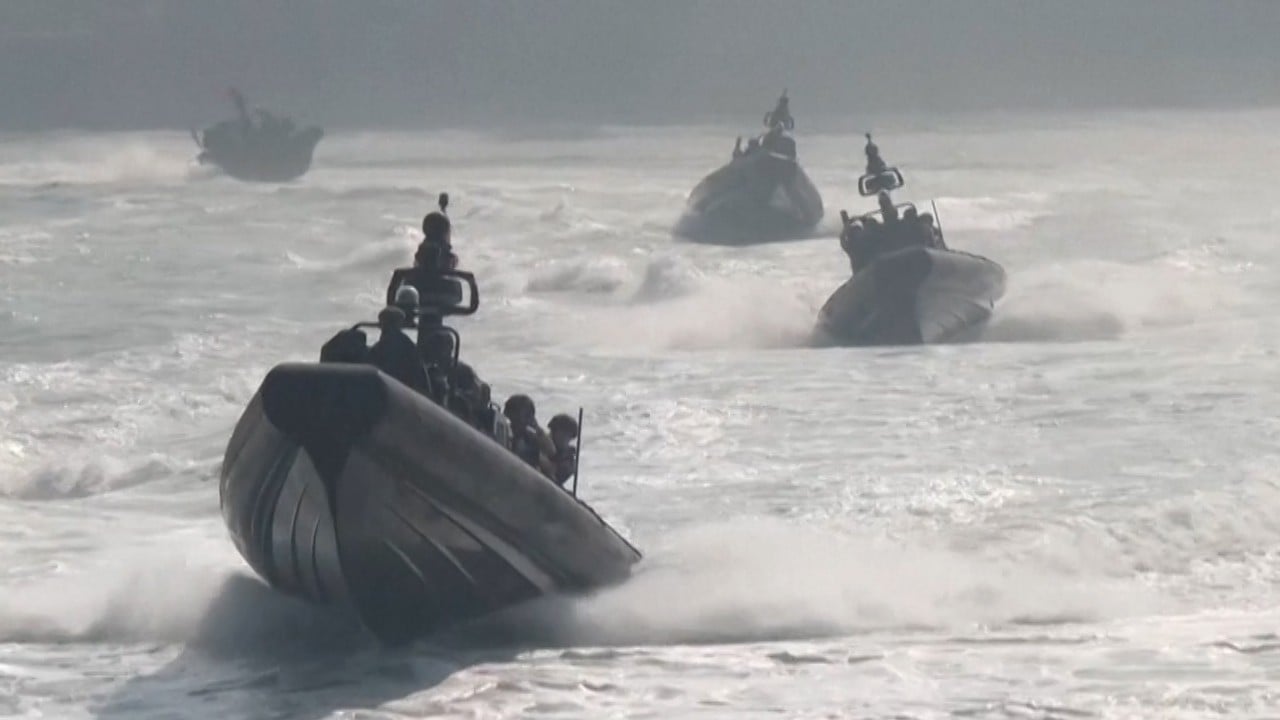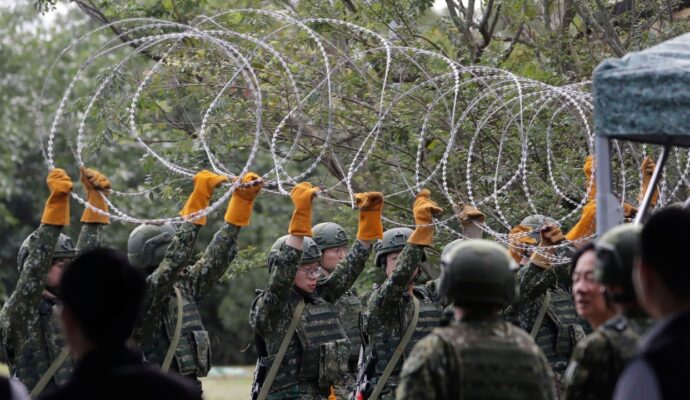On Flynn’s remark, the Chinese foreign ministry said Beijing had always been “firmly opposed” to US deployment of medium-range missiles in the Asia-Pacific region and strengthening forward deployment at “China’s doorstep to seek unilateral military superiority”.
“China adheres to the path of peaceful development and firmly pursues a defensive national defence policy. We have no interest in competing with any country in military power,” said the ministry’s spokeswoman Mao Ning during a press conference on Monday. “We urge the United States to earnestly respect the security concerns of other countries and stop undermining regional peace and stability.”
The SM-6 is the US Navy’s latest intercept missile designed for extended-range anti-air warfare against ballistic missiles, with an operational range of more than 240km and an active radar homing guidance system that allows the projectile to find and track its target autonomously.
The Tomahawk is a subsonic cruise missile capable of striking a target about 2,500km from a warship or in a submarine-based land-attack operation.
Flynn’s remark is the first time a US Army general has confirmed a ground-based launch system that could fire SM-6 and Tomahawks could be deployed in the Asia-Pacific this year.
“If the US Army’s deployment of SM-6 and Tomahawk missiles starts its implementation, it definitely is a message for China,” said Yang Uk, a research fellow at the Asan Institute for Policy Studies in Seoul.
“As the US naval power falls short of China, the US version of the counter A2/AD [anti-access/area denial] strategy, which deploys cruise and anti-ship missiles on land, has emerged as a way for the US Army to carry out multi-domain operations.
“Indeed, deploying a weapon system that puts the other party within its range is both a military threat and a warning to the adversary,” Yang added.
US to deploy new mid-range missile system in Asia-Pacific by end-2024
US to deploy new mid-range missile system in Asia-Pacific by end-2024
Although mainly used by the navy, the missiles can also be fired from the US Army’s Mid-Range Capability system, also known as Typhon, which the US Army has operated in Guam since last year.
Land-based missiles using launchers are considered more likely to avoid detection and enemy strikes than other platforms, such as naval vessels and warplanes requiring ports and runways.
“Mobile launchers like these could be very useful. If deployed to friendly islands, they could both defend those islands from aerial attack and strike surface ships that get close,” said John Bradford, executive director of the Yokosuka Council on Asia-Pacific Studies. “Being mobile and relatively small, enemies may have trouble locating and striking them.
“Were [Beijing] to invade Taiwan, launchers like these could help defend the island directly … the missiles could help contest China’s opportunity to easily cross the air and sea spaces around Taiwan.”
The deployment of such weapon systems in the Asia-Pacific region would be the first in 37 years. The US-Soviet Union Intermediate-Range Nuclear Forces (INF) Treaty reached in 1987 prohibited developing and possessing land-based missiles with a range between 500km to 5,500km (310-3,400 miles).
Washington has been developing new intermediate-range missiles after it withdrew from the INF Treaty in 2019, citing Moscow’s alleged violations of the agreement and amid China’s increasing military advancement in the Indo-Pacific region, most notably its missile forces.
According to the Pentagon’s annual report on China’s military power published in October, the PLA Rocket Force is estimated to have 500 intermediate and 1,000 medium-range ballistic missiles with ranges between 1,000-5,500km, and 550 launchers for firing these weapon systems.
“China has a clear geographic advantage. it can deploy its missile arsenal across a larger swathe of land, and even its short-range missiles would be effective in a local conflict,” said Shaan Shaikh, deputy director and fellow for the Missile Defence Project at the Washington-based think tank Centre for Strategic and International Studies.
“The US military cannot afford to match China in regional missile capacity, but it can improve its posture by expanding strike options, minimising response times and improving resilience under fire, as these deployments do.”
Timothy Heath, a senior international defence researcher at Rand Corporation, said the US Army fielded these systems to augment similar capabilities already operated by the American air force and navy, creating an increasingly difficult target problem for Chinese military planners, and improving the resilience of US forces within the theatre.
“Without the US Army’s weapons, China could destroy much of the US Air Force’s capacity by bombing airfields on Okinawa. It could also use anti-ship missiles to keep US warships away,” said Heath. “But now China must also target countries that host US Army Typhon launchers.”
Japan showing ‘obvious offensive characteristics’ with new missile unit, says PLA
Japan showing ‘obvious offensive characteristics’ with new missile unit, says PLA
Heath stressed that these weapons were deployed to deter a Chinese invasion across the Taiwan Strait.
“The SM-6 could be used to shoot down Chinese military aircraft flying over Taiwan, and the Tomahawk could be used to destroy Chinese warships that supported an amphibious invasion,” Heath said.



